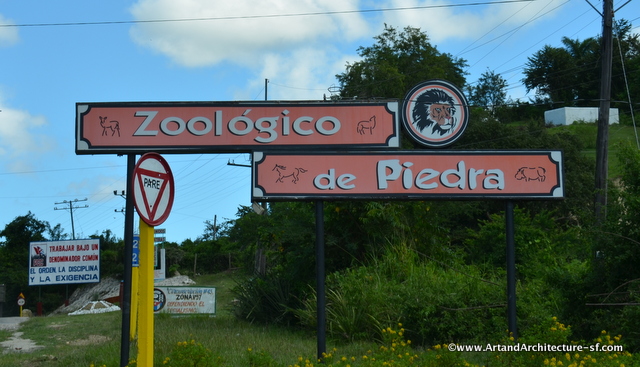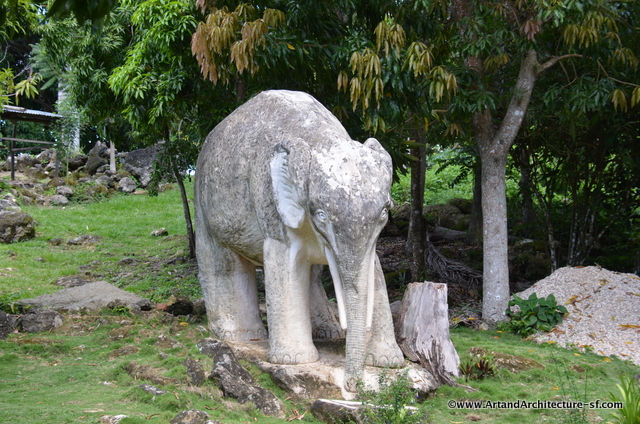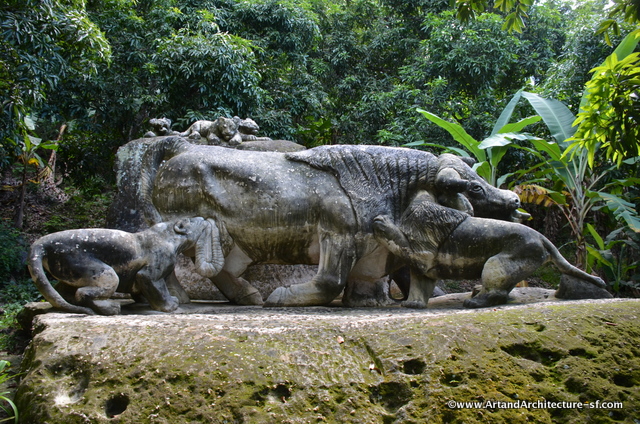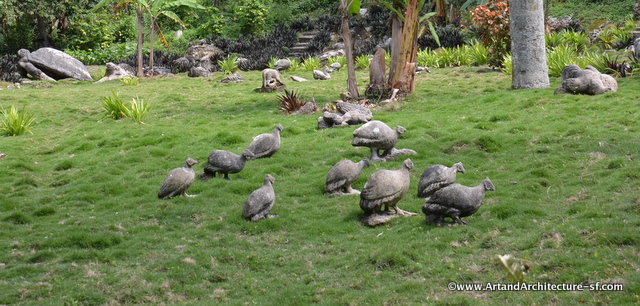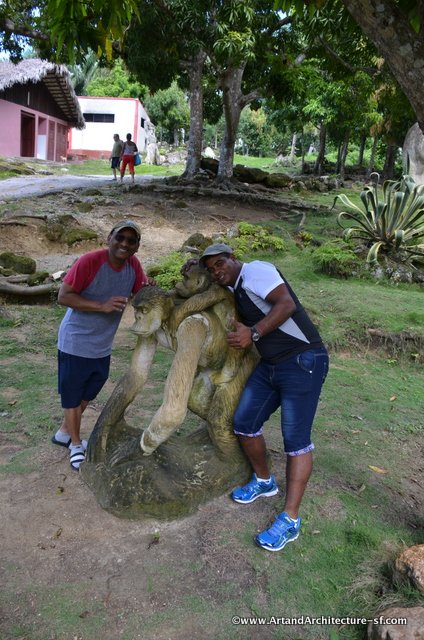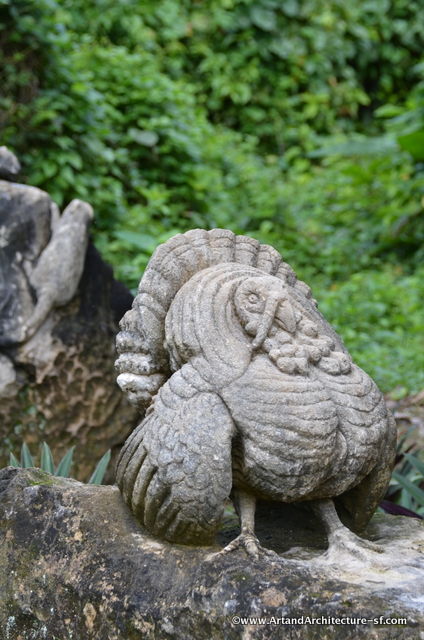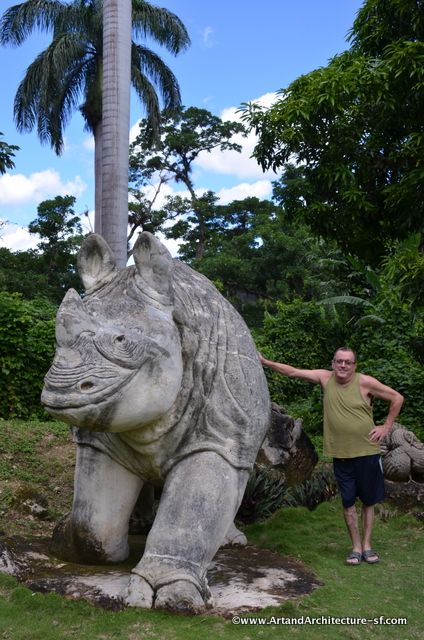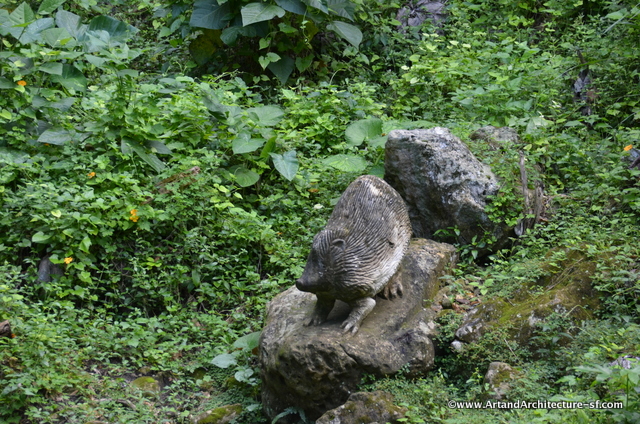April 2015
I have come to Guantánamo to visit my friends family. This post is really just a walking tour of the downtown.

General Pedro A. Perez
The town of Guantánamo was founded in 1796 to handle the French fleeing the slave revolution of Haiti. Along with being famous for the naval base, the song Guantanamera (girl from Guantánamo) is probably the only reason American’s know of the town.
The song Guantanamera is aligned with changuí, a variation of son music that developed in the coffee plantations. The song was composed by Joséito Fernández in the 1940s. It was apparently inspired by a proud local girl who did not react to a compliment that he paid her. Later some verses from José Martí’s Versos Sencillos, were added.
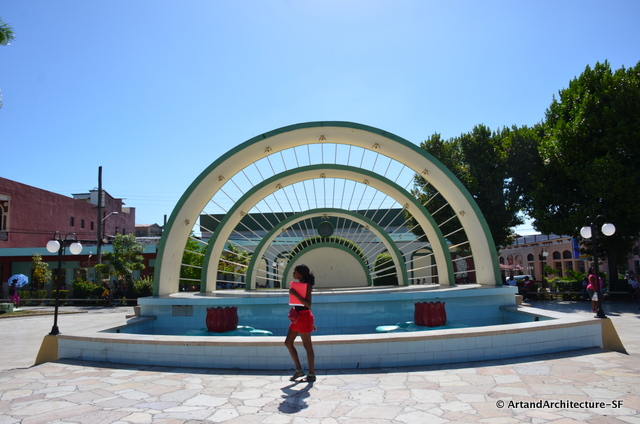 The center of Guantánamo City is Jose Marti Central Park.
The center of Guantánamo City is Jose Marti Central Park.
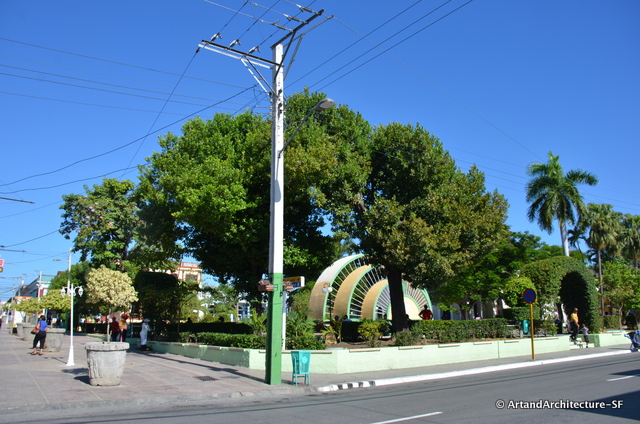
Jose Marti Park in Guantanamo City
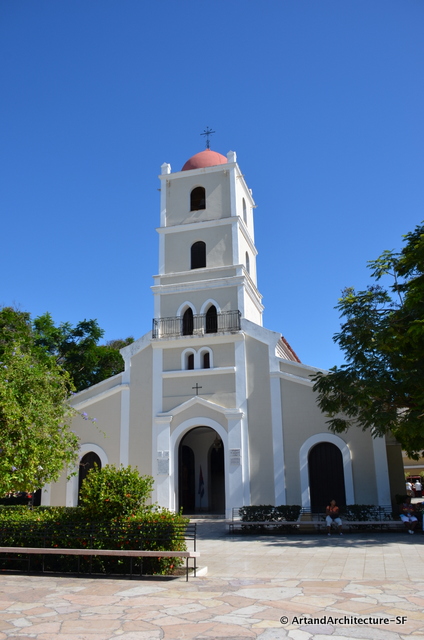 This is the Iglesia Parroquial de Santa Catalina that sits on the central square.
This is the Iglesia Parroquial de Santa Catalina that sits on the central square.

Construction on the building started in April of 1837, but it was not finished until July 15, 1842. The first oratory was built in 1842. In 1953 a floor for the bell tower was added as well as the concrete cupola. Between 1959-60 other changes were made by Architect Jioaquín Sebares, under the tutelage of Dr. Francisco Prat Puig.
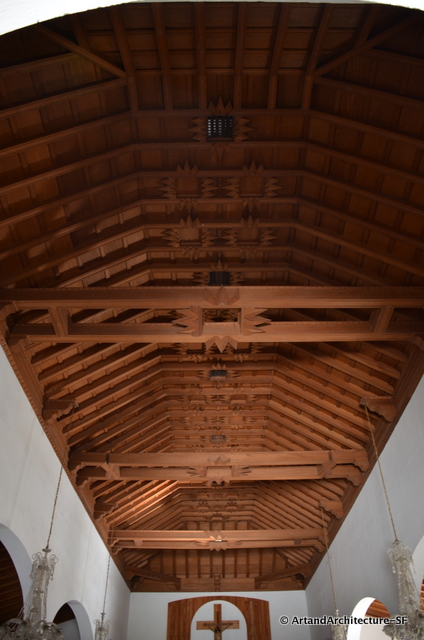
Note the beautiful carving on the ceiling
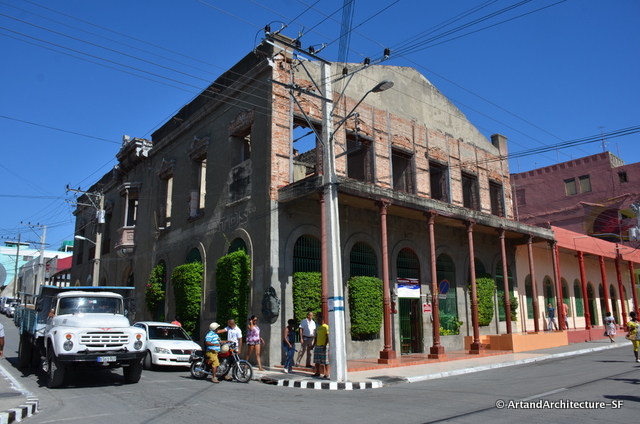
This building, about to undergo a restoration, is called Centro La Luz. It was the distribution center for José Martí’s children books.
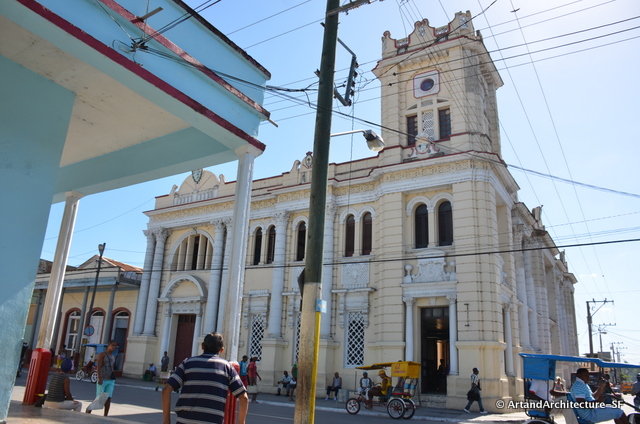
This was the home of engineer José Letyicio Salcines Morlotte, built in 1919 in the Beaux Arts style. The house was one of the first to integrate bathrooms into the bedrooms, breaking with the traditional colonial house design. In 1994 the Post Office moved into the first floor and the Municipal Syndicate of Education moved into the third, the second remained residential. The building underwent a restoration in 1999 and now the Salcines Art Gallery is on the first floor, the Decorative Art Museum on the second and the Provincial Center of Cultural Patrimony is on the third.
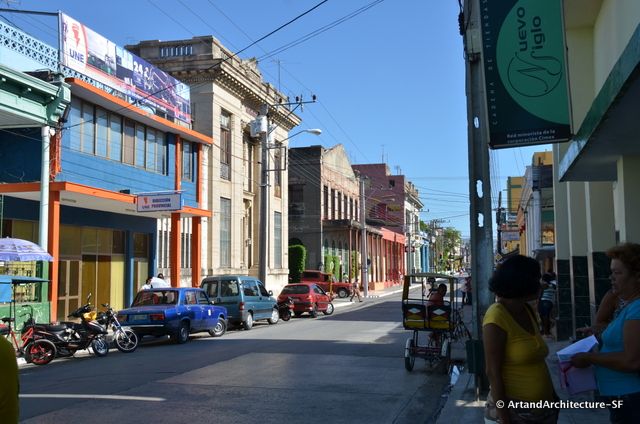
The main street of Guantánamo
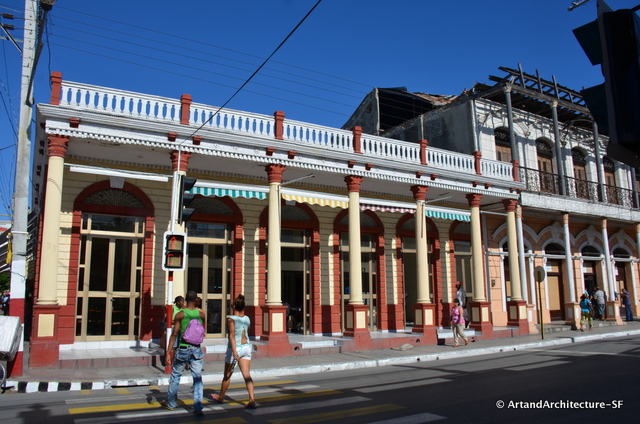
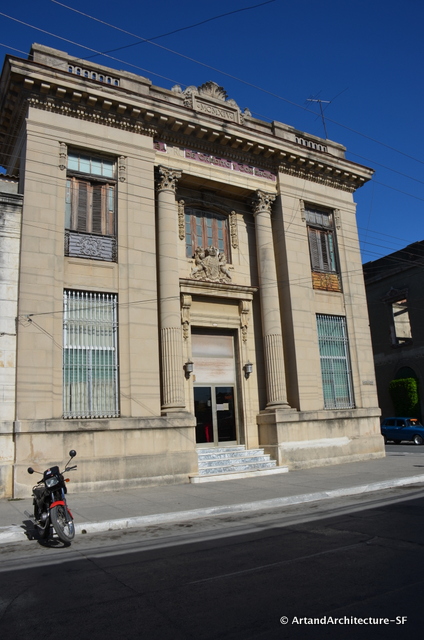
The Royal Coat of Arms of the United Kingdom sits over the front door of this Cuban bank
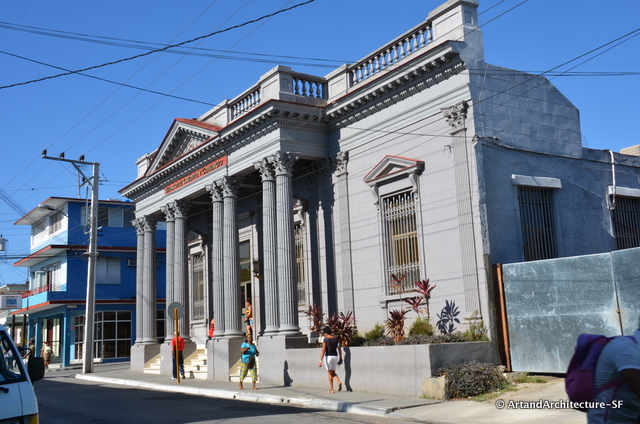
Another classically designed bank, now a Cuban bank

The neighborhoods of Guantánamo City.
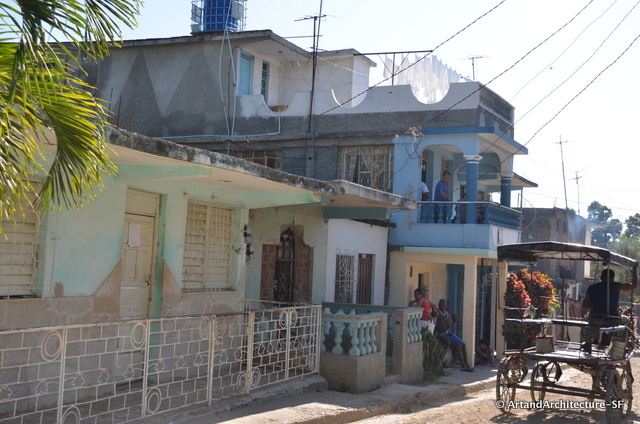
Due to the absolute level land of Guantánamo, bicycles of every shape, size, color and design are everywhere in Guantánamo City.
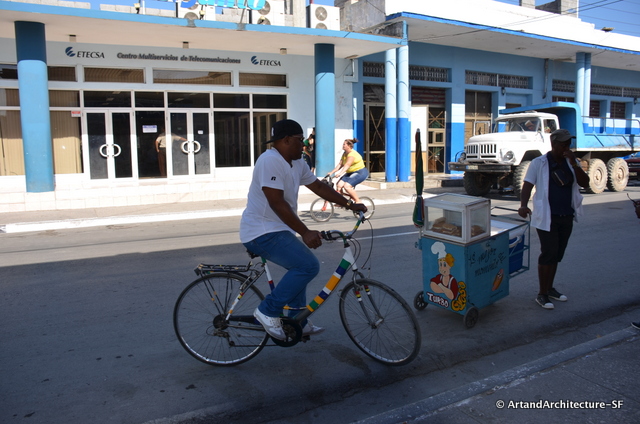
There are many forms of transportation in Cuba, and due to the compact nature of Guantánamo, I saw most of them.
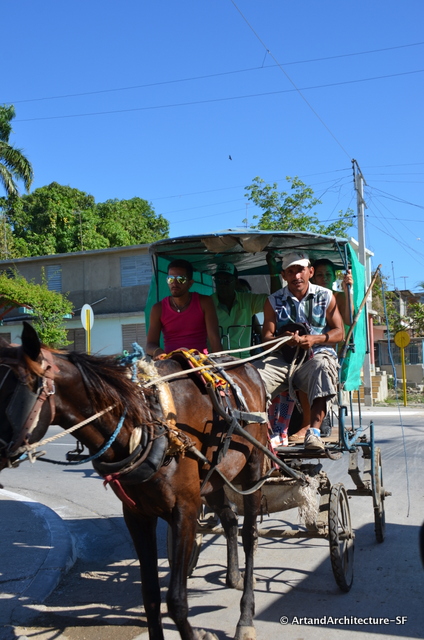
This isn’t as odd as it looks. Since the buses in Cuba are worthless many enterprising people have adapted large trucks into human transport devices. This truck had benches inside to take on passengers and get them where they need to go.
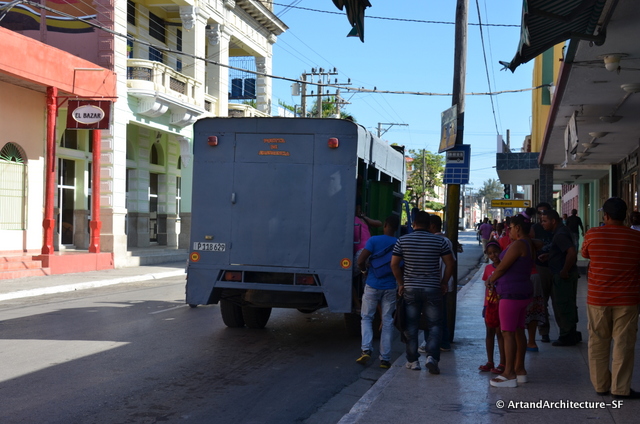

This is the bus station. Since the buses are so bad, the building serves more as a meeting place than an actual bus station. People arrive here in search of transportation, often in those jeeps that you see.
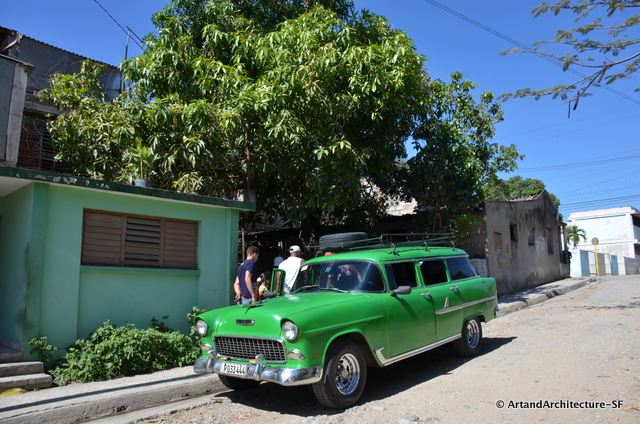
We drove from Santiago de Cuba to Guantánamo in this. These older cars are called Almendrónes (Almonds). Almendrones are pre-1959 US automobiles and are called that due to their particularly round and elongated shape. They are the cheapest “for hire” cars. Our ride that day, which was a 6 hour day for the driver, cost approximately 900 Cuban pesos, or about $33 US. Keep in mind that the average monthly salary of a Cuban is $24 US.
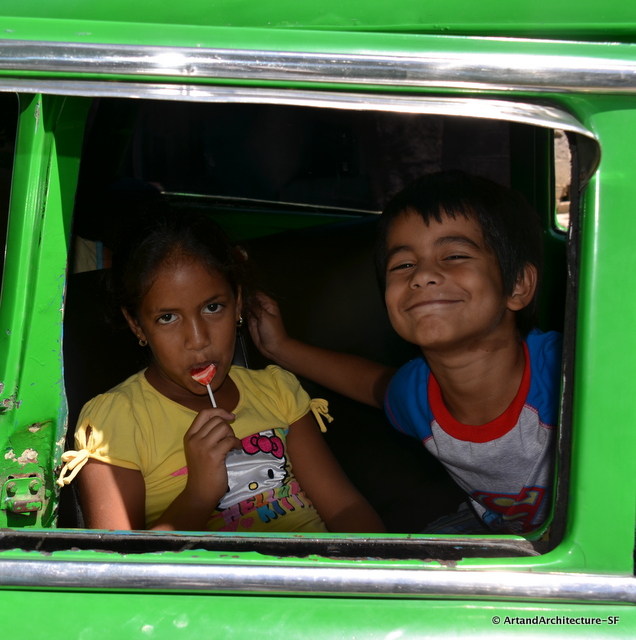
We had a lot of fun in this car. Children in Cuba are not allowed to ride near a door or in the front seat
It is 55 miles from Santiago to Guantánamo, and for some unknown reason it took two hours to get there but only one to return. The roads were typical of Cuba, good parts and bad parts. We traveled part of the way on a new road called the Autopista National. Even though it is fairly new it still had potholes. The odd thing was, I could never quite reconcile in my mind what the new road was for. The traffic was absolutely nil, with the exception of leaving Santiago, you could land a plane on the road and no one would be the wiser, there were very long stretches where we saw no one.
There are two checkpoints between the two towns, one you can be flagged over going either direction the other is just for entry to the area around Guantanamo, we were not stopped at any. This, the driver said, is because they knew his car as he makes the run regularly. I have to assume that is also why he veered around the potholes at 50 mph, he knows the road well.
Our driver raised his hand in greeting to every car, hard to do in the U.S. if you travel 55 miles. There was one tunnel, not long, but, as an aside, there were no lights inside. When we returned I noticed our driver go through the tunnel much much slower than the first time, I then saw a motorcycle cop on the other end. After that I noticed our drivers wave to the other cars was different, obviously they all have hand signals, that was truly a fun bit of insight, glad to see they have a bit of rebellion in them.
A funny note. I had a window seat, and of course the window was down. The next morning I got up to put on the same white shirt I had worn to Guantanamo and it had a fine covering of black, not so noticeable as to be alarming, but noticeable enough that I couldn’t wear it again without washing and it makes you wonder what is in my lungs from that trip. This car, like many others in Cuba are converted to diesel due to the cheaper cost, I guess that explains my dirty shirt.

One of the stops that we made along the way was this yogurt and sandwich kiosk. Set in front of a private home, the yogurt was some of the best I have ever had. The woman showed me around the new additions to her home she is able to make due to the extra income this little enterprise is bringing in.
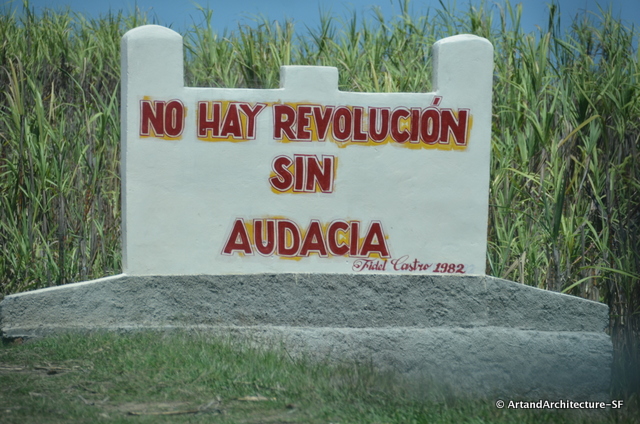
And finally, a drive through Cuba is never complete without being bombarded with communist propaganda. There is no revolution without boldness.
